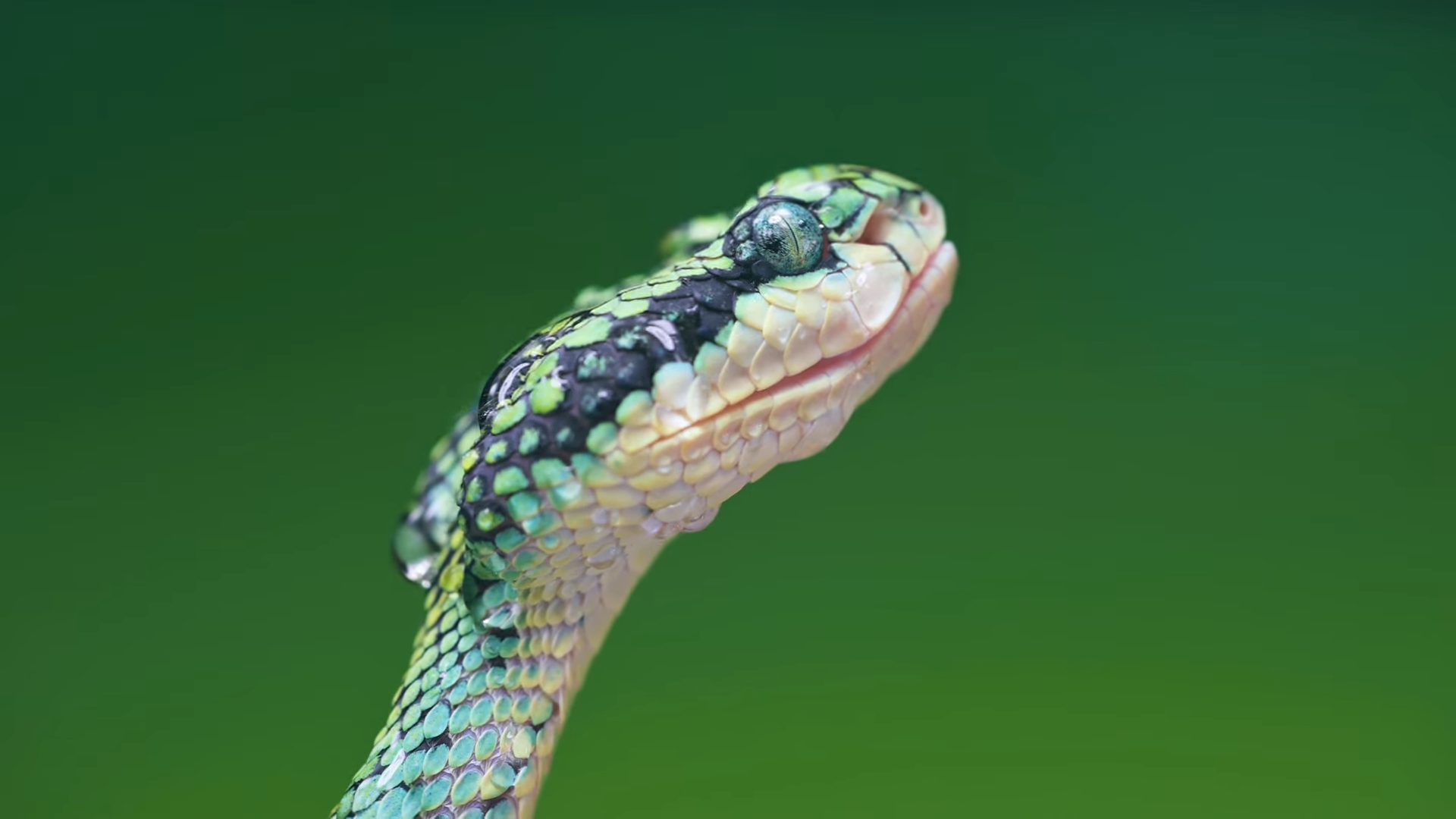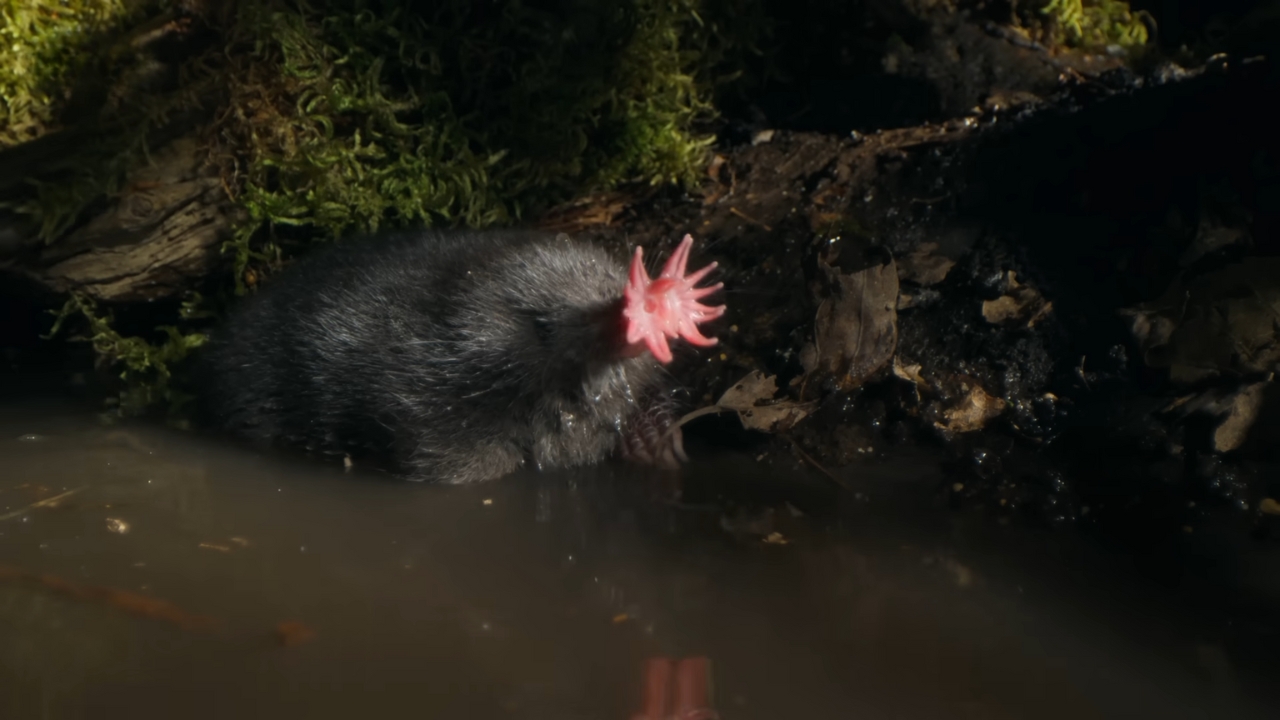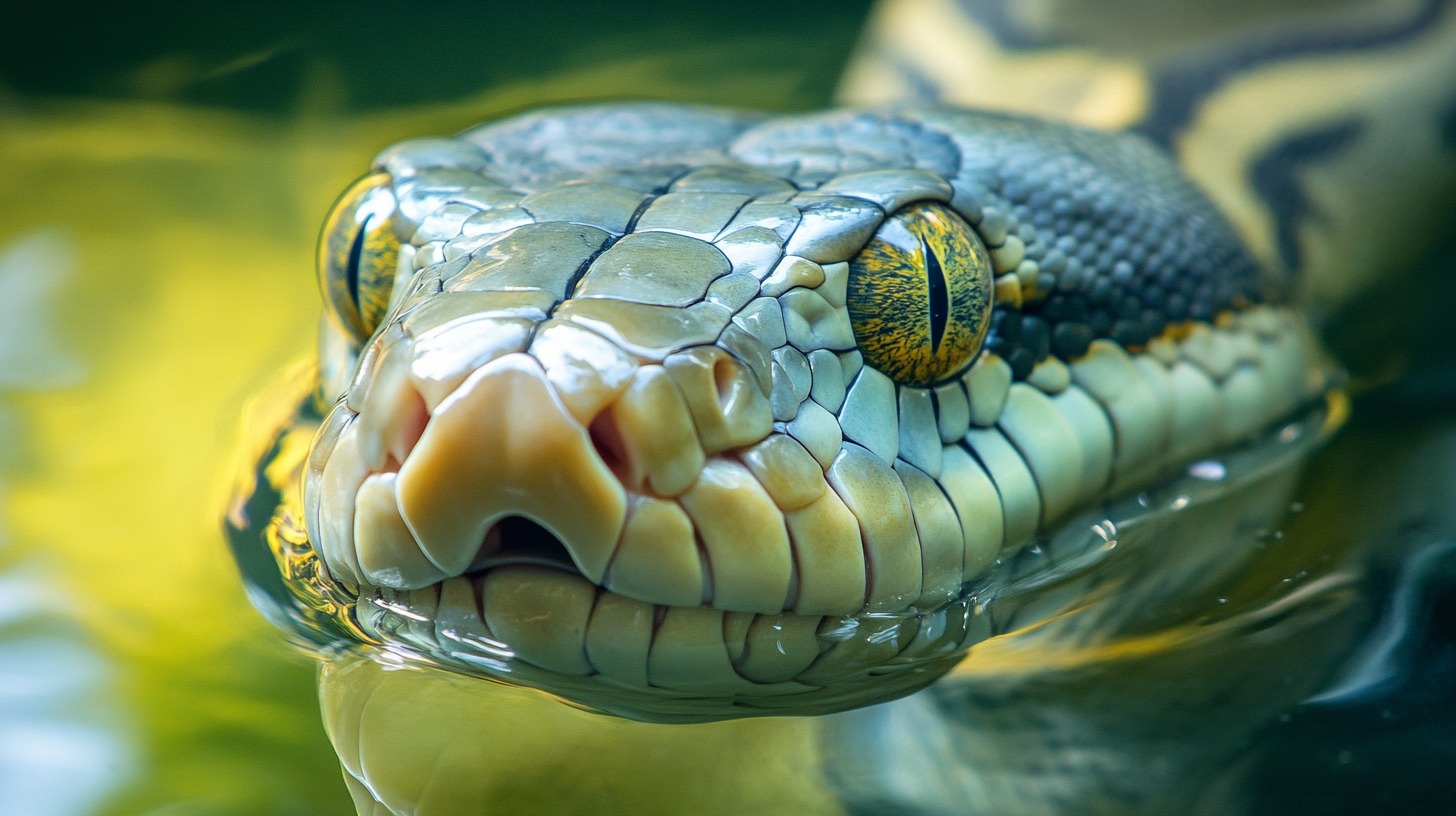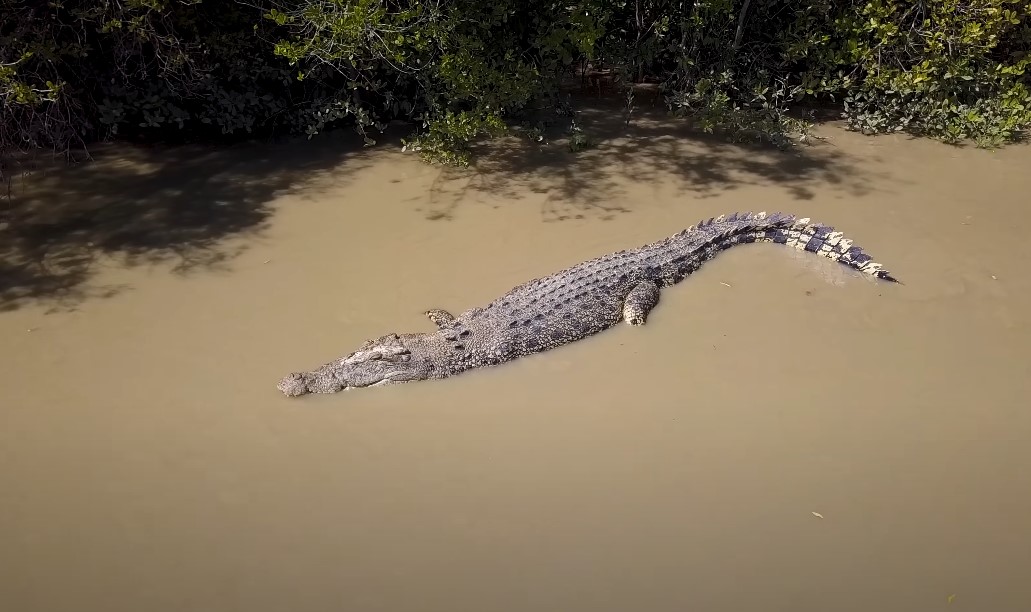
Share Post:
The beauty of snakes is often overshadowed by their dangerous reputation, yet their striking patterns and vibrant colors make them some of the most stunning creatures in the animal kingdom.
Enthusiasts and herpetologists alike are captivated by the intricate designs and unique hues that set these reptiles apart.
What makes a snake beautiful varies from person to person, but key elements such as vivid coloration, unique patterns, and overall symmetry are commonly admired.
This article aims to highlight some of the most visually stunning snake species found across the globe, offering a glimpse into their mesmerizing world.
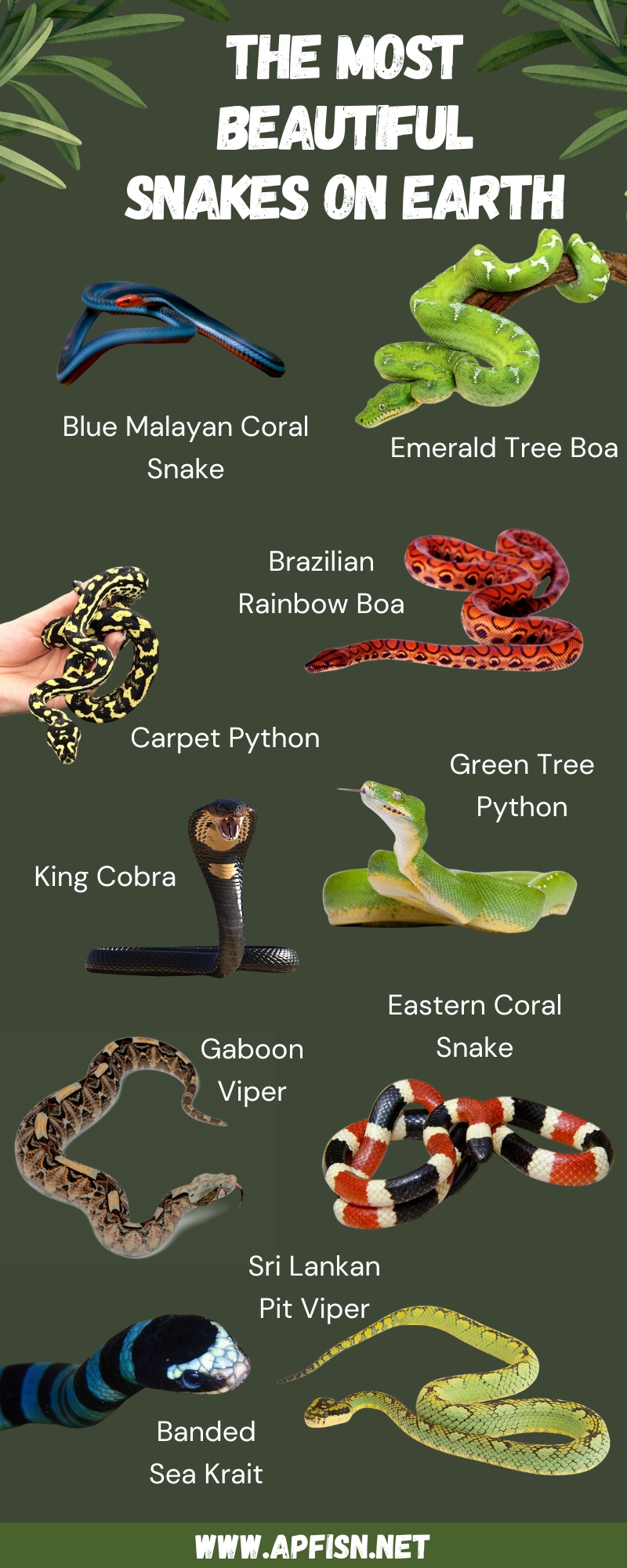
10. Emerald Tree Boa

Characteristic
Details
Native Habitat
Amazon Rainforest
Lifespan
15-20 years in captivity
Reproduction
Ovoviviparous (live young)
Behavior
Nocturnal; solitary
Conservation Status
Least Concern
The Emerald Tree Boa is renowned for its striking emerald green coloration. This non-venomous snake is native to the rainforests of South America, particularly in the Amazon basin. Its vibrant color provides excellent camouflage among the trees.
Measuring typically between six to nine feet in length, the Emerald Tree Boa has a distinctive physical appearance. It features a pattern of white stripes or spots along its back, adding to its beauty according to San Franciso Zoo.
This species is arboreal, spending most of its life in trees. It feeds primarily on small mammals and birds. Its prehensile tail helps it navigate and secure itself on branches.
One striking feature of the Emerald Tree Boa is its resemblance to the green tree python. Despite their similar appearance, they belong to different families. People often confuse them due to their vivid green coloration.
The Emerald Tree Boa is a popular subject among reptile enthusiasts and photographers. This snake’s captivating look and unique behavior make it a fascinating species to observe.
In captivity, they present challenges as they require specific humidity and temperature conditions. These factors highlight the importance of understanding their natural habitat for proper care.
9. Blue Malayan Coral Snake
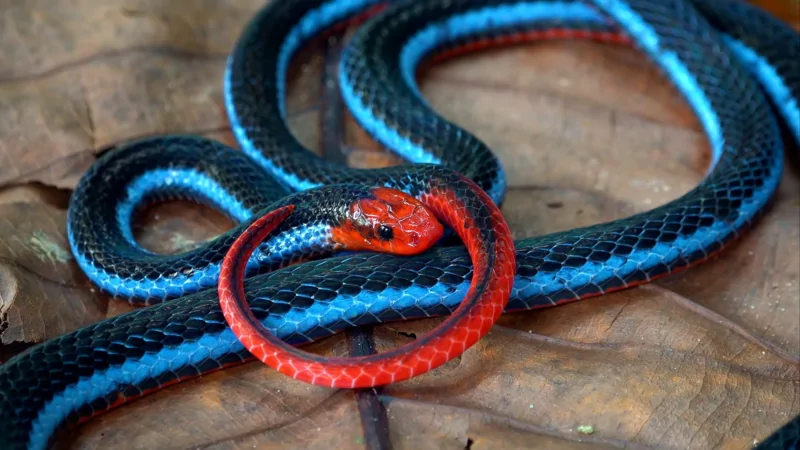
Characteristic
Details
Native Habitat
Forests of Southeast Asia
Lifespan
Up to 15 years
Venom
Highly potent neurotoxin
Behavior
Mostly nocturnal
Conservation Status
Least Concern
The Blue Malayan Coral Snake is a strikingly beautiful and venomous species. Known for its vibrant blue body with bright red or orange highlights, this snake is a visual marvel.
Native to Southeast Asia, it inhabits forests and regions with dense underbrush. This snake often remains hidden, waiting to ambush its prey.
Its diet primarily consists of other small snakes and occasionally lizards. The Blue Malayan Coral Snake uses a potent neurotoxic venom to immobilize its prey quickly as per Research Gate.
The elongated body of this snake can grow up to 5 feet in length. Its distinctive coloration serves as a warning to potential predators about its highly toxic nature as it is noted by the thainationalparks.
8. Carpet Python

Characteristic
Details
Native Habitat
Australia, New Guinea
Lifespan
20-30 years in captivity
Reproduction
Lays 10-50 eggs per clutch
Behavior
Arboreal and terrestrial
Conservation Status
Least Concern
The Carpet Python is renowned for its striking appearance and the intricate patterns on its scales, which resemble woven carpets. These non-venomous snakes belong to the Pythonidae family and come in various subspecies, each with unique colorations.
The Irian Jaya Carpet Python is native to Papua New Guinea and is known for its black, gray, and gold coloration. This species typically grows to an average length of 4 to 6 feet.
The Jungle Carpet Python exhibits beautiful dark and light banding patterns. They are oviparous, with females laying 2-4 dozen eggs and providing warmth and protection for 4-8 weeks.
The coastal carpet python, the largest subspecies, can reach up to 10 feet in length. In contrast, the Darwin carpet python is smaller, averaging 4 to 6 feet. Females are generally larger and heavier than males according to A-Z Animals.
Known for their docile nature, carpet pythons can grow up to 12 feet long, making them one of the larger python species. Their unique row of thermo-responsive labial pits aids in detecting prey in low-light conditions.
7. Brazilian Rainbow Boa

Characteristic
Details
Native Habitat
Amazon Basin
Lifespan
20-25 years in captivity
Reproduction
Ovoviviparous
Behavior
Mostly nocturnal
Conservation Status
Least Concern
The Brazilian Rainbow Boa is widely regarded as one of the most beautiful snakes in the world. This species is known for its iridescent scales that refract light, creating a striking rainbow effect.
Native to the Amazon Basin, the Brazilian Rainbow Boa thrives in humid, tropical environments. They are often found in countries like Brazil, Colombia, and Venezuela.
These snakes can grow up to six feet in length. Despite their size, they are non-venomous and rely on constriction to subdue their prey.
The Brazilian Rainbow Boa feeds mainly on small mammals and birds as per ReptiChip. They are nocturnal hunters, using their excellent night vision to capture prey.
Their stunning appearance and relatively gentle nature make them a popular choice among snake enthusiasts. However, they require specific care conditions to thrive in captivity.
6. King Cobra

Characteristic
Details
Native Habitat
Forests of Southeast Asia
Lifespan
20 years in the wild
Venom
Neurotoxin and cardiotoxin
Behavior
Diurnal; builds nests
Conservation Status
Vulnerable
The King Cobra (Ophiophagus hannah) is recognized as the world’s longest venomous snake. It can grow up to 18 feet in length. Its size and imposing presence make it an awe-inspiring creature.
Its coloration varies from olive green to brownish yellow, adding to its majestic appearance. Unlike many other snakes, the King Cobra has a distinct hood. This hood is expanded when the snake feels threatened.
This species is native to forests in Southeast Asia, including India and China. It primarily feeds on other snakes. The King Cobra’s diet even includes other venomous species.
They are commonly found in tall vegetation, which makes them an occasional risk to humans working in such areas. Their venom is potent, capable of inducing severe damage to the nervous system.
The King Cobra also exhibits unique behavior during the breeding season according to National Zoo. Males engage in combat for the right to mate, and females are known to guard their nests actively.
5. Green Tree Python

Characteristic
Details
Native Habitat
New Guinea, Indonesia, Australia
Lifespan
15-20 years in captivity
Reproduction
Lays 6-32 eggs per clutch
Behavior
Arboreal; often perches in a coil
Conservation Status
Least Concern
The Green Tree Python, known for its vibrant green coloration, is a striking example of nature’s beauty. Native to New Guinea, Indonesia, and parts of Australia, this species is often seen draped elegantly over tree branches, emphasizing its arboreal nature.
Juvenile Green Tree Pythons start out with different colors, ranging from bright yellow to brick red, before maturing into their signature emerald green according to ADW. This fascinating color transformation is one of the many reasons they are highly admired.
In addition to their typical green hue, there are several unique localities including Arfak, Manokwari, and Merauke, each exhibiting subtle variations in color and pattern. The Merauke Green Tree Python, for example, tends to have a yellowish-green color with discolored scales.
These snakes prefer humid, tropical environments and require specific care when kept in captivity. Proper humidity, temperature, and a well-structured enclosure are essential to mimic their natural habitat. They primarily feed on small mammals and birds.v
4. Gaboon Viper
Characteristic
Details
Native Habitat
Sub-Saharan Africa
Lifespan
10-15 years in captivity
Venom
Hemotoxin and neurotoxin mix
Behavior
Ambush predator; camouflages well
Conservation Status
Least Concern
The Gaboon Viper is one of the most strikingly beautiful snakes on the planet. Native to the rainforests and savannahs of Sub-Saharan Africa, this species is known for its unique and vibrant coloration. Patterns of browns, pinks, purples, yellows, blacks, and silvers adorn their scales according to Animalia Bio.
These vipers boast the longest fangs of any venomous snake, reaching up to two inches in length. Their venom is highly potent, combining hemotoxic and neurotoxic properties. This makes them both fascinating and fearsome creatures.
Despite their lethal bite, Gaboon Vipers are relatively docile snakes. They often rely on their excellent camouflage to avoid confrontation. They blend seamlessly into the fallen leaves and forest floor, making them difficult to spot.
In the wild, they thrive in tropical climates, hunting small mammals, birds, and frogs. They use their long fangs and potent venom to subdue their prey quickly and efficiently. Their ambush strategy allows them to conserve energy while waiting for unsuspecting prey to wander within striking distance.
3. Eastern Coral Snake

Characteristic
Details
Native Habitat
Southeastern United States
Lifespan
7-10 years in the wild
Venom
Neurotoxic venom
Behavior
Secretive; spends much time underground
Conservation Status
Least Concern
The Eastern Coral Snake is renowned for its vibrant coloration. Its body features a series of bright red, yellow, and black bands. This snake can be easily confused with other species, but its distinct color pattern is a clear identifier.
Typically found in the southeastern United States, the Eastern Coral Snake prefers environments such as forests, marshes, and sandhills. This snake is highly secretive and often stays hidden beneath leaf litter or underground.
The venom of the Eastern Coral Snake is neurotoxic. While it rarely bites humans, it can cause serious symptoms if it does according to NCBI. Immediate medical attention is recommended if bitten. The snake’s small size and reclusive nature lower the likelihood of encounters.
Despite its fearsome reputation, the Eastern Coral Snake is an important part of the ecosystem. It helps control rodent populations. Its striking appearance makes it one of the most visually stunning snakes in the world.
2. Banded Sea Krait

Characteristic
Details
Native Habitat
Indian and Pacific Oceans
Lifespan
10 years in the wild
Venom
Highly toxic; used primarily for hunting fish
Behavior
Amphibious; returns to land to lay eggs
Conservation Status
Least Concern
The Banded Sea Krait, also known as the yellow-lipped sea krait, is one of the most visually striking snakes found in the ocean. Its distinctive black and white bands, combined with a bright yellow marking on its upper lip, make it easily recognizable.
This snake is commonly found in the warm waters of the Indian and Pacific Oceans. It spends much of its time hunting for prey in coral reefs.
Though it is a sea snake, the Banded Sea Krait returns to land to rest, digest, and lay eggs as noted by Oceana. Unlike many sea snakes, it has a more cylindrical body and a paddle-shaped tail, which aids in swimming.
Despite its beauty, the Banded Sea Krait is highly venomous. Its venom is potent and primarily used to immobilize fish and eels, its main food source.
1. Sri Lankan Pit Viper

Characteristic
Details
Native Habitat
Wetlands and grasslands of Sri Lanka
Lifespan
10-15 years in captivity
Venom
Hemotoxin
Behavior
Nocturnal; prefers to ambush prey
Conservation Status
Least Concern
The Sri Lankan Pit Viper, native to the wetlands and grasslands of Sri Lanka, is a striking species known for its vivid coloration. These snakes typically measure around 2-3 feet in length, making them relatively small compared to other pit vipers.
This species is sexually dimorphic, meaning males and females differ in size and color. Females can reach up to 51 inches and display a stunning green hue. Males, on the other hand, are smaller and often exhibit more of a blue coloration.
With a slender, elongated body covered in keeled scales, the Sri Lankan Pit Viper presents a rough texture. Its triangular-shaped head, prominent snout, and large eyes are characteristic features that aid in its predatory skills.
Despite their venomous nature, these vipers are not very aggressive toward humans. They prefer to rely on their camouflage to ambush prey, making them highly effective hunters.



